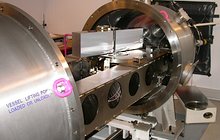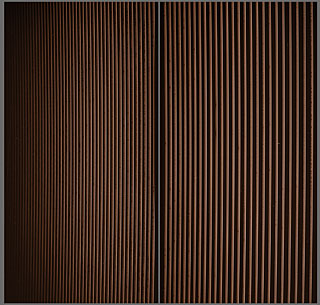HARPS
High Accuracy Radial velocity Planet Searcher
ESO’s La Silla Observatory is home to one of the most successful planet finders in the history of astronomy: HARPS, or High Accuracy Radial velocity Planet Searcher, which is currently “the” planet hunter of ground-based astronomy.
 Attached to the ESO 3.6-metre telescope, HARPS searches nightly, and with unparalleled accuracy, for exoplanets. Today it leads the field, regularly generating astounding results that will present fresh challenges for future telescopes like the ELT.
Attached to the ESO 3.6-metre telescope, HARPS searches nightly, and with unparalleled accuracy, for exoplanets. Today it leads the field, regularly generating astounding results that will present fresh challenges for future telescopes like the ELT.
But what does HARPS do to detect these planets? It is all matter of perspective. As we are so far from the stars, we cannot see their exoplanets directly. Instead HARPS detects minute wobbles in the stars’ motion. Stars and their exoplanets are bound together by gravity, so an exoplanet orbits its distant parent star, just as the planets of the Solar System orbit the Sun. But a planet in orbit around a star exerts its own gentle pull, so that the orbital centre of the system is a little away from the centre of the star and the star itself orbits about this point. We can detect this as a small regular movement of the star to and fro along our line of sight. This tug of war between any star and its exoplanets can be seen (or rather, measured) by HARPS, with an incredible precision. HARPS picks up small changes in the star’s radial velocity (i.e. along the line of sight), which can be as little as a gentle walking pace of 3.5 km/h!
Due to the Doppler effect, this radial velocity change induces a shift of the star’s spectrum towards longer wavelengths as it moves away from us (called redshift) and a shift towards shorter wavelengths (blueshift) as it approaches. This tiny shift in the star’s spectral lines can be measured with a high-precision spectrograph such as HARPS and used to infer the presence of a planet.
For example, in 2011 the team behind HARPS reported the discovery of 50 exoplanets, including 16 new super-Earths (with masses between one and ten times that of the Earth). HARPS, at that time, was responsible for two thirds of all the known exoplanets with masses less than that of Neptune (eso1134). But that's not all! HARPS found the first planet around a star very similar to the Sun (eso1402) and thanks to the observations with this instrument, astronomers have calculated that there are billions of rocky planets in the habitable zones around red dwarfs in the Milky Way (eso1214).
In April 2018 a new small solar telescope called HELIOS — HARPS Experiment for Light Integrated Over the Sun — was installed on the catwalk of the 3.6-metre telescope. HELIOS was built by the University of Geneva and the Centro de Astrofísica da Universidade do Porto. It feeds the HARPS instrument, which is fibre-linked to the 3.6-metre telescope. HARPS is one of the most powerful planet hunters in existence and spends most nights monitoring stars for radial-velocity signals that indicate the presence of exoplanets. During the day HELIOS feeds the sunlight integrated over the solar disk into HARPS to achieve very high precision spectroscopy of the Sun for several hours per day. As well as learning about the Sun itself, the HELIOS project is expected to improve our understanding of stellar activity which turned out to be the main limitation in the detection of Earth-twins using HARPS and therefore will lead to an improvement of exoplanet detection techniques.
Science highlights with HARPS
- HARPS finds Earth-mass exoplanet around Ross 128 (eso1736)
- Transiting rocky super-Earth found in habitable zone of quiet red dwarf star (eso1712)
- Planet Found in Habitable Zone Around Nearest Star (eso1629)
- First planet found around a solar twin in star cluster (eso1402)
- A planet found in the nearest star system to Earth (eso1241)
- Many billions of rocky planets in the habitable zones around red dwarf stars in the Milky Way (eso1214)
- Fifty new exoplanets discovered (eso1134)
- 32 new exoplanets (eso0939)
- Lightest exoplanet yet discovered (eso0915)
- A trio of Super-Earths (eso0819)
- Astronomers “listen” to an exoplanet-host star and find its birthplace (eso0809)
- HARPS finds the first “Earth-like” planet in its star’s habitable zone (eso0722)
- HARPS unveils an extrasolar planetary system with three Neptune-mass planets (eso0618)
|
A raw spectrum, straight from HARPS. The light of a star was dispersed according to its colours, or wavelengths, along a very long strip. The optical elements in the spectrograph chop this long spectrum into a series of shorter ones which are positioned one after the other on the two detectors of the instrument. In order to measure the wavelength with a very high accuracy, the light from a laser comb (eso0826) is also dispersed by the spectrograph, and forms a second series of lines just next to the spectrum of the star. The light from the laser comb appears as a series of dots, whose positions are well known and serve as a reference. |
HARPSThe authoritative technical specifications as offered for astronomical observations are available from the Science Operation page.
|

